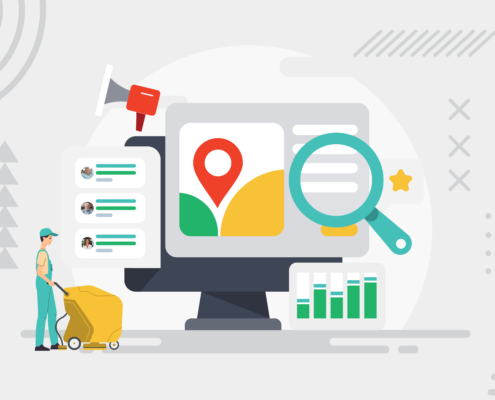

Research shows that 44% of companies surveyed estimate they lose over 10% in annual revenue because of poor prospect data in their CRM software.
Many small to medium-sized businesses make the mistake of building prospect lists but not taking the time to perform routine data cleansing procedures. Without a prospect data management process in place, you risk following a sales development strategy that yields poor results. This is what makes data hygiene so essential to your ongoing business growth efforts.
But what is data hygiene anyway, and why does it happen in the first place? In this blog, we’ll expand on these topics and provide you suggestions on different ways you maintain good data hygiene for a sustainable and predictable sales pipeline.
What Is Data Hygiene and Why Is It Important?
Data hygiene is the process of cleaning up prospect data in your company’s CRM or sales development database to ensure it’s accurate, complete, and consistent. Data hygiene practices include removing records of duplicate prospect contacts, standardizing formatting across all accounts, and correcting any errors that may have been made.
Implementing data hygiene practices in your everyday sales development functions keeps your data reliable so your sales development representatives (SDRs) don’t spend a significant amount of time chasing the wrong prospects or setting sales and account executives up with low-quality sales appointments. Practicing data hygiene also makes it easier for SDRs to share and exchange with other roles on the SDR team, allowing you to have a seamless sales development and marketing process.
What Causes Poor Data Hygiene?
Poor data hygiene doesn’t just happen from a single source. It’s often a grouping of different things that add up, resulting in an inconsistent and invaluable sales development process. Poor data hygiene also negatively affects your company’s bottom line, spending more time and money towards keeping a pipeline healthy rather than everyday business matters.
More often than not, poor data hygiene occurs as a response to the following:
Lack of Standardization
Poor data hygiene often occurs as a result of a lack of data entry standardization from one SDR team member to another. When prospect data is entered without a clear set of guidelines, you risk every SDR team member inputting data in their own way, which can be hard to find or keep up with for a successful lead generation program.
Incorrect Data Entry
As humans, we’re prone to make mistakes from time to time. Another common reason for poor data hygiene is incorrect data entry from either the SDR or the prospect themselves.
With all the different actions SDRs have to complete in a day, it can get hectic trying to keep up with them all, especially when it comes to keeping data accurate from one prospect to another. This can include making typical typo errors, adding the wrong information to the wrong prospect account, or just forgetting to save data once it’s been input into the data set.
On the other hand, while SDRs aren’t always perfect, neither are prospects. When inbound leads come in through your website or social media platforms, it’s very common for prospects to make a typo when submitting their phone number or email address. Luckily, if SDRs have the correct additional information such as their contact name, company they work for, etc., it can be easy for SDRs to find them online or through prospect verification software, like ZoomInfo.
Duplicate Data Entry
Many companies have hundreds (if not thousands) of prospects in their sales pipeline, making it easy to have duplicates. While there are some prospect list building best practices to avoid this, it’s not impossible or uncommon for a few duplicate prospects to make the passthrough. This happens most often when the list of new prospects starts to slim down and your sales and data analysts have to add new prospects to the sales pipeline.
For more insight into how to avoid duplicate data entry when implementing a new list, check out our blog on how to effectively build a prospect list here.
Data Corruption
Data corruption has become a lot less common now since CRM and sales databases are primarily cloud-based, but they can still occur. Data can be corrupted due to hardware and software failures, power outages, and any other type of system distribution. Therefore, backing up data is vital for reducing the risk of poor data hygiene.
Lack of Routine Maintenance
Changes happen all the time with businesses and their decision-makers: change of job titles, phone numbers, email addresses, names, company branding, etc. This is what makes routine data maintenance such an important part of keeping prospect data clean.
If you want clean data in your sales pipeline, it’s essential to perform routine maintenance. This includes suspending or updating outdated or duplicate records. Without consistent maintenance from SDRs, data becomes less reliable, risking lead generation efforts with little to no business growth impact.
Inconsistent Data Sources
Another reason that many sales development teams have poor data hygiene is due to the use of various inconsistent data sources.
When potential customer data is gathered from multiple sources, it can be more difficult to keep it consistent and accurate across the board. This is because each list building database on the market has different formats, data structures, and validation rules. Therefore, while it may be good practice to use various prospect data sources, it’s important that sales and data operation analysts compare lists and eliminate the contacts that are dupes or provide little information.
Ways to Maintain Good Data Hygiene
If you want to maintain good data hygiene and have a predictable and sustainable lead generation program, follow these data hygiene best practices:
Establish Clear Data Entry Guidelines
If you want to maintain good data hygiene for long-term success, establish clear data entry guidelines for SDR teams to follow. This includes proper formatting and validation showing where they got the information from. This can help other SDRs and sales quality assurance specialists know where the information came from, ensuring it’s consistent and accurate for follow ups and scheduled sales meetings.
For example, a best practice that our SDRs follow to support good data hygiene is that after eight phone calls with no contact or verified decision-maker information through research, they must suspend the prospect contact on their CRM system. This means that the prospect is no longer in the client’s sales pipeline but remains in the CRM, so the SDR can focus on more pressing leads that they’re more than likely to get a hold of and pitch.
Regularly Cleanse Data
Regularly cleansing data keeps data clean and consistent. This includes using prospect software like ZoomInfo and Clearbit to ensure the correct decision-maker is trying to be reached and routine checkups of verifying a decision-maker’s contact information and their sales qualifiers.
For example, if an SDR finds the decision-maker’s contact information online or through prospecting software like ZoomInfo, they must verify that it’s accurate with the decision-maker. While you don’t need to do this after every point of contact, it’s important to consider the last time an SDR verified contact info to see how long it’s been since the contact had been cleansed, keeping it as up-to-date as possible without pestering them too much about it.
Use Automation Tools
There is an unlimited amount of software on the market that can help SDR teams automate tedious data cleansing and validation actions. This includes software that helps verify data quality and identify duplicate contact data in your sales pipeline. Automating these processes empowers SDRs to spend more time pitching qualified prospects than finding the right information.
Consistently Backup Data
Remember data corruption that we mentioned earlier? Well, this is exactly what you can do to avoid it. While data corruption may be less common now than in years past, SDR teams need to continue backing up data. This will help SDR teams recover any lost data so they don’t have to spend unwarranted time finding information again if data happens to go missing.
Implement a Data Governance Structure
Like any role on the SDR team, every position has its own responsibilities for ensuring prospects move effectively through the sales pipeline. Implementing a data governance structure allows SDR teams to set sales and account executives up with high-quality sales appointments that are both sales and marketing qualified.
For example, at Abstrakt, we have sales and operations analysts that are responsible for building the prospecting lists and implementing them into our CRM data management system. From here, sales reps call and email the prospects supplied for them to confirm their information and set sales meetings. Once a sales meeting is set, we have quality assurance managers that grade the appointments set to ensure they meet our client’s sales and marketing qualifiers. If a sales appointment doesn’t meet the client’s expectations, the meeting is disqualified and doesn’t go towards their monthly appointment set goal.
Practice Data Entry Training
Your SDRs might be incredible relationship builders and appointment setters, but this doesn’t mean that they won’t forget crucial best practices for data cleaning. Having SDRs take routine data entry training helps make sure they follow best practices and set your sales pipeline up for sustainable and predictable growth. This could include requiring them to attend a training session or watching a video that covers how they should be inputting data entries.
Key Takeaways
Having good data hygiene is one of the most important factors when trying to grow your business. Without a clean list of prospects in your CRM, you risk wasting a significant amount of time and money chasing potential customers that have little to no opportunity to provide your company a positive ROI. However, many marketing and sales development teams overlook the impact it has on building a lead generation solution that yields results.
At Abstrakt Marketing Group, our SDR teams are consistently trained on CRM data cleansing best practices to ensure they set clients up with high-converting sales meetings. We use a wide range of sales prospecting tools to help clients find potential customers that meet their satisfaction. When you’re ready to fill your sales pipeline up with cleansed and qualified prospects, contact the lead generation experts at Abstrakt!




